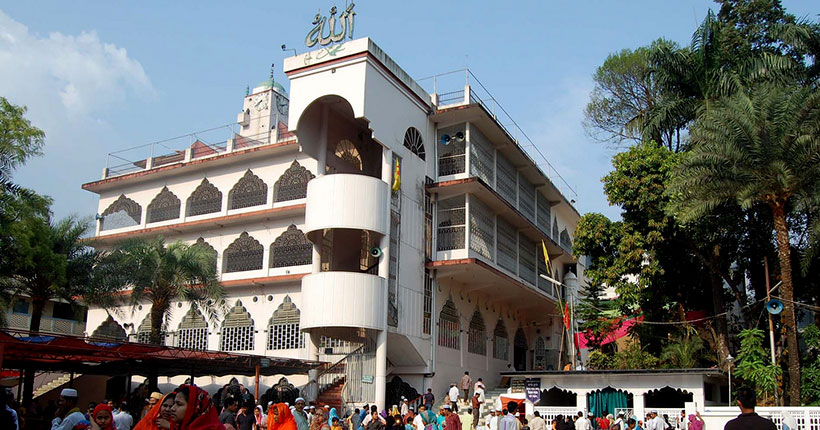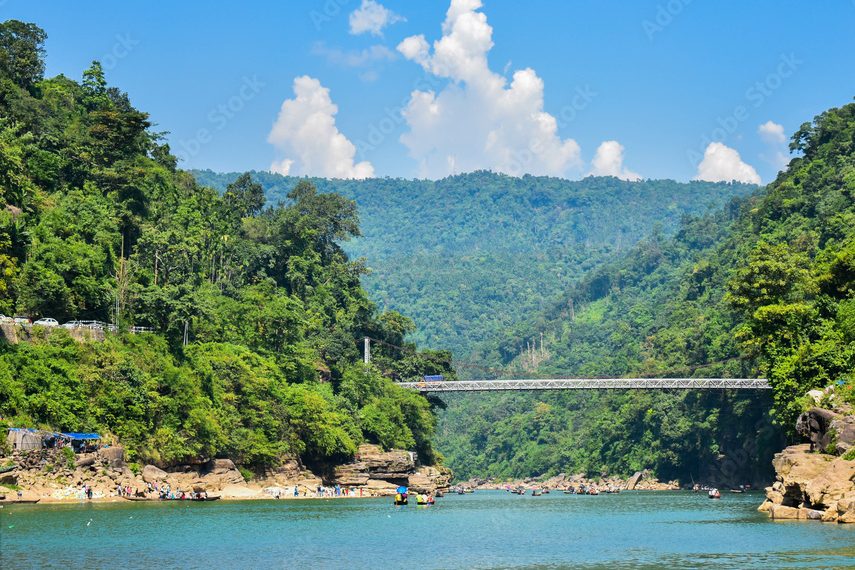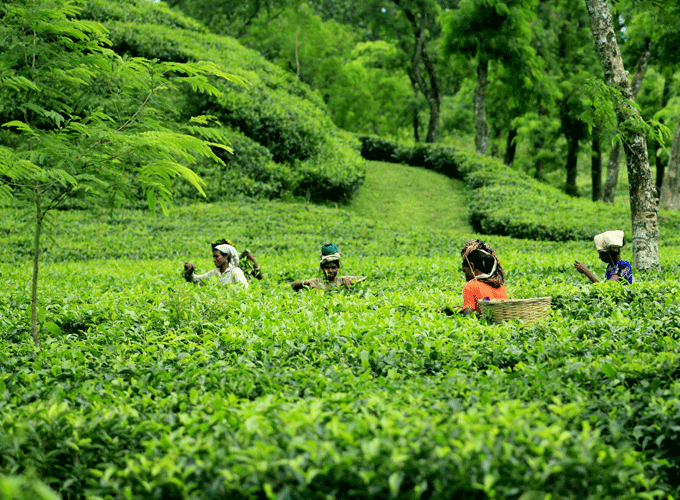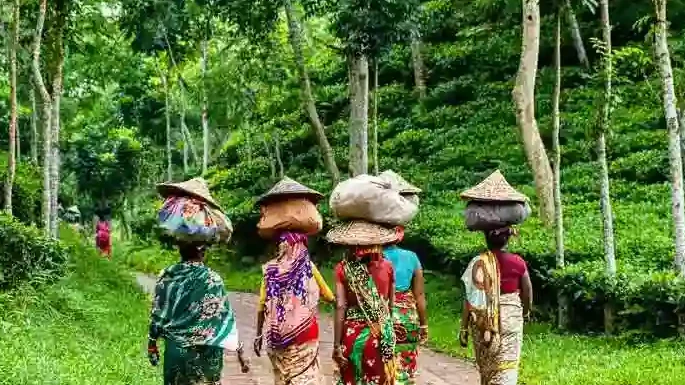If you are looking for a Sylhet Tour Guide, a destination in Bangladesh that blends natural beauty, rich culture, and a touch of spirituality, then Sylhet should be at the top of your travel list. Known as the “Land of Two Leaves and a Bud,” Sylhet is famous for its lush tea gardens, rolling hills, crystal-clear rivers, and breathtaking waterfalls. Every year, thousands of travellers from home and abroad visit Sylhet to experience its unmatched charm.
In this blog, we’ll take you through the must-visit places, the best time to travel, local food, and everything you need to know to make your Sylhet tour memorable.
Why Visit Sylhet? (Sylhet Tour Guide)
Sylhet is often called the “Land of Two Leaves and a Bud” because of its world-famous tea gardens. Beyond tea, it is a region rich in natural beauty, spirituality, and adventure. From the serene beauty of Jaflong to the thrilling waterfalls of Madhabkunda, Sylhet offers an unforgettable travel experience for families, couples, backpackers, and adventure seekers alike.
Sylhet is not just about natural wonders; it’s also a cultural and spiritual hub. The region is home to the famous shrines of Hazrat Shahjalal (R) and Hazrat Shah Paran (R), making it an important place for spiritual travellers. Sylhet Tour Guide, Beyond that, its green landscapes, hospitable people, and delicious food make it one of the most loved travel destinations in Bangladesh.
Whether you are an adventure seeker, a nature lover, or someone looking for a peaceful retreat, Sylhet has something for everyone.
Top Tourist Attractions in Sylhet (Sylhet Tour Guide)
Hazrat Shahjalal (R) and Hazrat Shah Paran (R) – The Spiritual Icons of Sylhet

Sylhet is not only famous for its tea gardens, rivers, and hills but also for its rich spiritual heritage. Two of the most respected Sufi saints in Bangladesh, Hazrat Shahjalal (R) and his nephew Hazrat Shah Paran (R), played a significant role in spreading Islam in the Sylhet region during the 14th century. Today, their shrines are among the most visited pilgrimage sites in Bangladesh, attracting both devotees and tourists from home and abroad.
Hazrat Shahjalal (R) – The Saint of Sylhet (Sylhet Tour Guide)
Hazrat Shahjalal (R), born in Yemen, was a renowned Sufi saint who came to Sylhet in the early 14th century. He is best known for his role in establishing Islam in the region. History records that he arrived in Sylhet with 360 companions to support the oppressed and to spread the message of peace, harmony, and spirituality.
His shrine, located in the heart of Sylhet city, is not only a religious site but also a cultural landmark. The atmosphere at the shrine is serene, where thousands of visitors come every day to pray, seek blessings, and pay their respects.
Highlights of the Shrine:
- Located on a small hill in Sylhet city.
- Houses the tomb of Hazrat Shahjalal (R).
- A large mosque nearby for daily prayers.
- Pigeons around the shrine, believed to be symbols of blessings.
Hazrat Shah Paran (R) – The Nephew and Disciple (Sylhet Tour Guide)
Hazrat Shah Paran (R), the beloved nephew of Hazrat Shahjalal (R), also holds a special place in Sylhet’s spiritual history. He continued the mission of his uncle and settled a few kilometres away from the main city. His shrine is located in Sylhet’s Khadimnagar area, surrounded by peaceful hills and greenery.
Hazrat Shah Paran (R) was known for his piety, simplicity, and dedication to teaching people the values of Islam. His shrine is quieter compared to Shahjalal’s but carries a strong sense of spirituality.
Highlights of the Shrine:
- Situated on an elevated area in Khadimnagar, Sylhet.
- Known for its peaceful environment and scenic view.
- Devotees visit to offer prayers and vows.
Visiting the Shrines (Sylhet Tour Guide)
If you are on a Sylhet tour, visiting these shrines is a must—not only for religious reasons but also to experience the cultural and historical importance of the region.
Travel Tips:
- Dress modestly when visiting the shrines.
- Remove shoes before entering the sacred areas.
- Fridays are the busiest days for visitors.
- Photography inside the shrine premises may be restricted.
1. Jaflong – The Land of Stones and Rivers
Located on the border between Bangladesh and the Indian state of Meghalaya, Jaflong is one of the most enchanting tourist destinations in Sylhet. Known as the “Land of Stones and Rivers”, Jaflong is blessed with crystal-clear waters, rolling hills, and a breathtaking view of the Dawki River flowing from the Khasi Hills. For nature lovers and adventure seekers, Jaflong is a paradise that offers beauty, culture, and unforgettable experiences.

Why is Jaflong Famous? (Sylhet Tour Guide)
Jaflong is famous for its natural beauty, particularly the stone collection activities that take place on the riverbanks. The stones carried by the river from the mountains of Meghalaya are collected by locals, creating a unique landscape of colourful rocks and pebbles. Apart from its stone-filled riverbanks, Jaflong is surrounded by lush green hills, tea gardens, and tribal villages that make it a diverse travel destination.
Top Attractions in Jaflong
1. The Dawki (Piyain) River
The crystal-clear Dawki River, flowing from the Indian side, is the centrepiece of Jaflong. Tourists can enjoy boat rides on the transparent water while admiring the majestic view of the Khasi Hills in the background.
2. Stone Collecting Activities
One of the unique sights in Jaflong is the traditional stone collection. Watching the locals work with boats and nets to gather stones from the riverbed provides an authentic glimpse into the lifestyle of the area.
3. Tea Gardens and Hills
The rolling tea estates around Jaflong add charm to the landscape. Walking through these gardens is both refreshing and photogenic.
4. Khasi Tribal Villages
Jaflong is home to the indigenous Khasi people who live in small villages on the hill slopes. Visiting these villages gives you the chance to explore their culture, traditional homes, and handicrafts.
5. Zero Point (Bangladesh-India Border)
At Jaflong, you can visit the Zero Point on the border, where the Dawki River enters Bangladesh. The scenic beauty of the border area is spectacular and a popular photo spot.
Things to Do in Jaflong (Sylhet Tour Guide)
- Take a boat ride on the Dawki River.
- Explore the Khasi tribal lifestyle and interact with the locals.
- Go for a nature walk through tea gardens and hills.
- Capture stunning photos of stone collection activities.
- Visit nearby attractions like Sripur Waterfall and Tamabil.
Best Time to Visit Jaflong (Sylhet Tour Guide)
- Winter (November – February): Cool, pleasant weather, ideal for sightseeing.
- Monsoon (June – September): Rivers are full, waterfalls are active, and the greenery is at its best—though heavy rain can make travel difficult.
How to Get to Jaflong
- From Sylhet City: Jaflong is about 60 km away and takes 2–2.5 hours by car or bus.
- Transport Options: CNG auto-rickshaws, microbuses, or rented cars are the most convenient ways to reach Jaflong.
Travel Tips for Jaflong (Sylhet Tour Guide)
Boat rides are a must, so keep some extra time for this activity.
Carry sunglasses, sunscreen, and drinking water, as it can get hot during the day.
Wear comfortable shoes for walking on stones and riverbanks.
Respect local customs when visiting Khasi villages.
2. Srimangal – The Tea Capital of Bangladesh
Nestled in the heart of Moulvibazar district, Srimangal is famously known as the Tea Capital of Bangladesh. With rolling hills covered in lush green tea estates, lemon orchards, and pineapple plantations, Srimangal offers one of the most refreshing travel experiences in the country. If you are planning a Sylhet tour, Srimangal should definitely be on your list.

Why is Srimangal Called the Tea Capital?
Bangladesh is one of the world’s leading tea producers, and Srimangal contributes the most to this production. With over 150 tea estates, including some of the largest in the world, Srimangal has become a paradise for tea lovers. As you travel through the region, you will see endless tea gardens stretching across hills, making it a unique and picturesque destination.
Top Attractions in Srimangal

1. Tea Gardens
Sylhet Tour Guide, The endless green carpets of tea estates are the main attraction in Srimangal. Tourists can walk through the gardens, interact with tea workers, and even witness the tea-picking process.
2. Lawachara National Park
Located near Srimangal, Lawachara is a tropical rainforest and home to endangered species like the Hoolock Gibbon. Trekking and bird-watching are popular activities here.
3. Madhabpur Lake (Sylhet Tour Guide)
A serene lake surrounded by tea gardens and small hills, Madhabpur Lake is a peaceful spot for boating, nature walks, and photography.
4. Tribal Villages
Srimangal is home to various indigenous communities, such as the Khasi, Manipuri, and Tripuri. Visiting these villages offers a unique Sylhet Tour Guide cultural experience.
5. Seven-Layer Tea (Sylhet Tour Guide)
Perhaps the most famous attraction of Srimangal is its unique Seven-Layer Tea, a drink where seven different teas are layered in one glass without mixing. Created by a local tea artist, this drink is a must-try.
Things to Do in Srimangal (Sylhet Tour Guide)
- Take a cycling tour through tea gardens.
- Go for a wildlife trek in Lawachara National Park.
- Visit tribal handicraft shops for souvenirs.
- Taste local delicacies such as pitha and bamboo chicken.
- Enjoy a peaceful evening at Madhabpur Lake.
Best Time to Visit Srimangal (Sylhet Tour Guide)
- November to February (Winter): Cool weather, ideal for sightseeing and trekking.
- June to September (Rainy Season): Lush greenery, waterfalls, and fresh tea gardens at their best.
How to Get to Srimangal (Sylhet Tour Guide)
By Air: The nearest airport is in Sylhet, about 2 hours away.
By Road: Regular buses and private cars are available from Dhaka (around 4–5 hours).
By Train: Several trains run daily from Dhaka and Sylhet to Srimangal.
If you are a tea lover, Srimangal is a must-visit. Known as the “Tea Capital of Bangladesh,” Srimangal is covered with endless stretches of tea gardens. You can experience the famous Seven Layered Tea, a speciality drink that attracts tourists from all over the world. The calm environment and green landscapes make Srimangal a paradise for relaxation.
3. Lawachara National Park – A Haven for Wildlife Lovers
Lawachara National Park is one of the last remaining tropical rainforests in Bangladesh. Sylhet Tour Guide, It’s home to rare wildlife species, including the endangered hoolock gibbons. Sylhet Tour Guide, Adventure seekers can enjoy nature walks and explore the forest trails, while birdwatchers can spot a variety of colourful species.
4. Madhabkunda Waterfall – The Largest Waterfall in Bangladesh
Madhabkunda is the biggest waterfall in Bangladesh and a top attraction for travellers. The sight of water cascading down from high cliffs surrounded by lush green hills makes it a perfect spot for photography, picnics, and relaxation, Sylhet Tour Guide.
5. Hazrat Shahjalal & Shah Paran Shrines – A Spiritual Experience
Sylhet is also a spiritual destination. The shrines of Hazrat Shahjalal (R) and Hazrat Shah Paran (R) are visited by thousands of devotees each year. Sylhet Tour Guide, Apart from their religious significance, the shrines represent Sylhet’s rich history and heritage.
Best Time to Visit Sylhet
Sylhet is beautiful all year round, but the monsoon season (June to September) brings out its best. The rivers swell, waterfalls become more powerful, and the greenery turns even more vibrant. Sylhet Tour Guide, On the other hand, winter (November to February) is ideal for those who prefer a cooler climate and want to enjoy tea garden views in comfort.
Food to Try in Sylhet (Sylhet Tour Guide)
No tour is complete without tasting the local delicacies. Sylhet offers a unique blend of traditional Bangladeshi dishes along with regional specialities. Some must-try foods include:
- Shutki Maach (dried fish curry) – A Sylheti delicacy packed with bold flavours.
- Seven Layered Tea in Srimangal – A world-famous speciality.
- Traditional Sylheti curries and snacks – Rich in spices and flavour.
- Betel leaf and supari (paan) – A cultural staple you will often see locals enjoying.
Travel Tips for a (Sylhet Tour Guide)
- Transport: You can reach Sylhet by train, bus, or domestic flight from Dhaka. Once there, local transport such as CNG auto-rickshaws and jeeps is commonly used.
- Accommodations: Sylhet offers a wide range of hotels and resorts, from budget-friendly stays to luxurious retreats. Popular resorts near Srimangal and Jaflong are ideal for nature lovers.
- What to Pack: Comfortable walking shoes, light clothing for summer, and warmer clothes if travelling in winter. Sylhet Tour Guide, Don’t forget your camera!
Food to Try in Sylhet – A Culinary Journey Through the Land of Tea and Hills
Sylhet is not only famous for its tea gardens, rivers, and natural beauty but also for its unique and flavorful cuisine. Influenced by traditional Bangladeshi cooking, British-Sylheti heritage, and the flavours of tribal communities, Sylhet offers an unforgettable food experience. If you are planning a trip, here are some of the best foods to try in Sylhet.
1. Shatkora Curry (Beef or Mutton with Citrus Fruit)
One of the most iconic dishes of Sylhet is Beef or Mutton Shatkora, cooked with a local citrus fruit called shatkora. The fruit gives the curry a tangy, slightly bitter, and aromatic flavour that you won’t find anywhere else in Bangladesh. It’s a must-try for anyone visiting Sylhet.
2. Pitha (Rice Cakes and Sweets)
Sylhet has a long tradition of making pitha, especially during the winter season. From bhapa pitha (steamed rice cakes) to patishapta (stuffed rice crepes), these sweets are made from rice flour, jaggery, and coconut. Tourists visiting rural Sylhet can often experience pitha-making festivals.
3. Seven-Layer Tea (Srimangal Special)
No trip to Sylhet is complete without tasting the famous Seven-Layer Tea in Srimangal. This unique drink combines seven different types of tea with varying flavours and colours layered in a single glass. It’s not only delicious but also a true symbol of Sylhet’s tea culture.
4. Bamboo Chicken (Traditional Tribal Dish)
In the Khasi and Manipuri tribal villages around Sylhet, a popular delicacy is Bamboo Chicken. Chicken is marinated with spices and cooked inside bamboo tubes over fire, giving it a smoky, earthy taste that food lovers will never forget.
5. Fish Dishes – Rui, Pabda, and Hilsa
Like the rest of Bangladesh, Sylhet is rich in fish-based cuisine. Popular dishes include:
- Pabda Machher Jhol (Catfish Curry)
- Rui Fish Curry with Mustard
- Hilsa Fish cooked with mustard oil and spices
The rivers and haors (wetlands) around Sylhet make fish a daily staple in local households.
6. Handesh (Sylheti Fried Sweet)
Handesh is a traditional Sylheti sweet made with rice flour, molasses, and deep-fried to perfection. It is crispy outside, soft inside, and served during festivals and special occasions.
7. Tribal and Indigenous Food
Visiting Khasi and Manipuri villages in Sylhet allows travellers to taste traditional tribal dishes such as:
- Fermented bamboo shoots with fish or meat
- Steamed vegetables with herbs
- Indigenous snacks made from rice and maize
8. Street Food in Sylhet City
For a taste of local street flavours, Sylhet city has plenty to offer:
- Chotpoti & Fuchka (spicy chickpea and puffed rice snacks)
- Shingara & Samosa (fried savoury pastries)
- Jhalmuri (spicy puffed rice with mustard oil)
9. Sylheti Breakfast
A typical Sylheti breakfast includes paratha, dal, and aloo bhaji, often accompanied by sweet tea or milk tea. In rural areas, fresh cow’s milk with jaggery is also a common morning treat.
10. Exotic Fruits
Sylhet is blessed with tropical fruits such as pineapples, lychees, oranges, and jackfruit. The pineapples of Srimangal and Moulvibazar are especially sweet and juicy.
Contact ushttps://litonecotour.com/contact-us/

